T-shirt screen printing is a popular and versatile method for creating custom designs on fabric. ;
Whether you’;¿Es propietario de una pequeña empresa que busca promocionar su marca o es un individuo que desea expresar su creatividad?, mastering the art of screen printing can open up a world of possibilities. ;
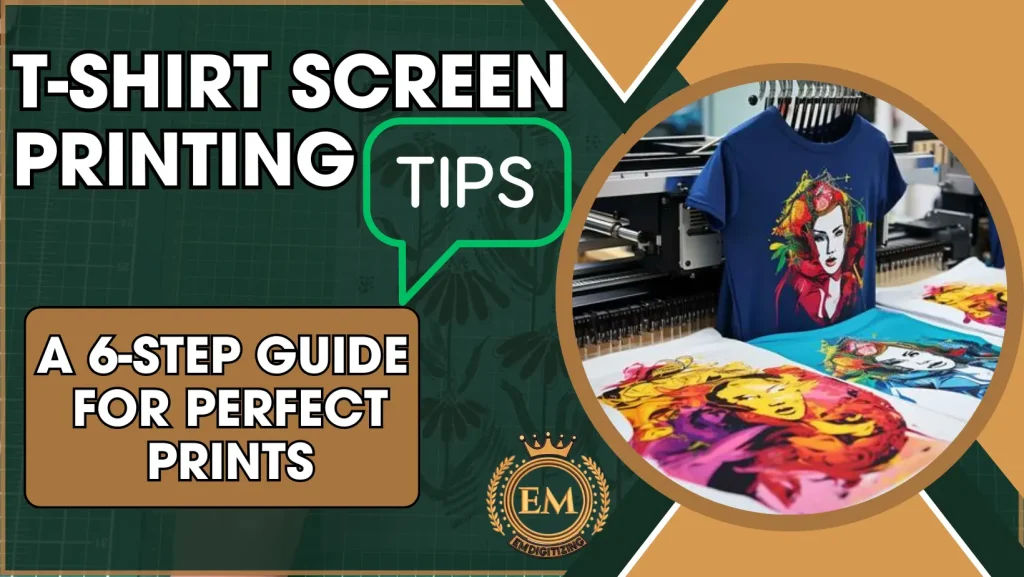
Esta guía completa lo guiará a través de los seis pasos esenciales para lograr impresiones perfectas en todo momento..
Consejos para serigrafía de camisetas: 6-Guía de pasos para impresiones perfectas
De seleccionar el derecho equipos y materiales para solucionar problemas comunes, we’;Cubriremos todo lo que necesitas saber para convertirte en un impresor de pantalla de camisetas competente..
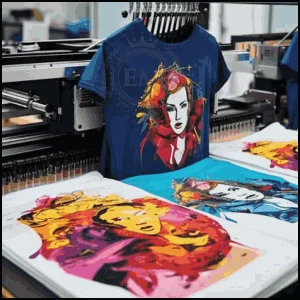
Asi que, let’;Sumérgete y explora juntos el fascinante mundo de la serigrafía de camisetas..
¿Qué es la serigrafía de camisetas??
serigrafía de camisetas Es un método popular para aplicar diseños sobre tela usando pantallas y tinta.. Se trata de crear una plantilla en una pantalla., a través del cual se fuerza la tinta para crear el diseño deseado en la camiseta.

Ventajas de la serigrafía de camisetas
La serigrafía ofrece varias ventajas para la impresión de camisetas. En primer lugar, it allows for vibrant and long-lasting prints that won’;No se desvanece después de algunos lavados..
En segundo lugar, Proporciona una gran flexibilidad en términos de diseño y opciones de color., permitiéndole dar vida a sus ideas creativas.
Por último, La serigrafía puede ser rentable para grandes cantidades., convirtiéndolo en una excelente opción para eventos, negocios, o fines promocionales.
Equipos y materiales esenciales
Equipos y materiales esenciales. Formar la columna vertebral de cualquier tarea o proyecto., garantizar que las operaciones se desarrollen sin problemas y de manera eficiente.
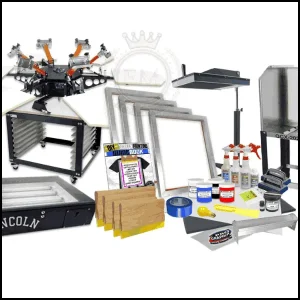
Prensa de serigrafía
Una prensa de serigrafía es la columna vertebral de su configuración de impresión. Mantiene la pantalla en su lugar y permite una presión constante durante el proceso de impresión..
Pantallas y recuentos de malla
Mamparas con varias mallas. Los recuentos se utilizan para crear diferentes niveles de detalle en sus impresiones.. Los recuentos de malla más altos son ideales para diseños complejos, mientras que los recuentos de malla más bajos funcionan mejor para las negritas., diseños sólidos.
Tintas y Aditivos
Cuando se trata de tintas, hay innumerables opciones disponibles. Las tintas a base de agua son populares por su tacto suave y su respeto al medio ambiente., mientras que las tintas plastisol son conocidas por sus colores vibrantes y su durabilidad..

Aditivos, como extensores o reductores, can help you achieve specific effects or improve the ink’;flujo.
Rascadores y recubridores de emulsión
Se utilizan rasquetas para empujar la tinta a través de la pantalla y hacia la camiseta.. Diferentes durómetros de rasqueta (dureza) están disponibles, permitiéndole elegir el que se adapte a sus necesidades de impresión.
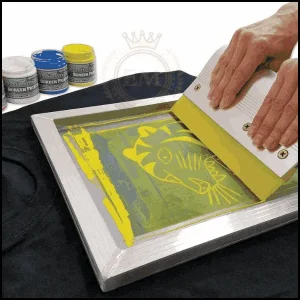
Recubridores de emulsión, por otra parte, Se utilizan para aplicar uniformemente la emulsión sobre la pantalla., creando la plantilla.
Preparación de la obra de arte y el diseño
La preparación de la obra de arte y el diseño es una fase crítica en el proceso creativo., donde las ideas y conceptos se traducen en representaciones visuales.
Consideraciones de diseño para la serigrafía
Cuando diseño para serigrafía, tenga en cuenta que cada color requiere una pantalla separada. Por lo tanto, it’;Es importante simplificar su diseño y minimizar la cantidad de colores para evitar la complejidad y aumentar la eficiencia..
Vectorizar y preparar la obra de arte
Para garantizar una impresión fluida, convierte tu diseño en un formato vectorial y limpiar cualquier imperfección. Esto ayudará a crear limpio, Líneas nítidas y evitar sorpresas inesperadas durante el proceso de impresión..
Separación de colores
Para diseños multicolores, separación de colores es esencial. Este proceso implica separar cada color en capas individuales., permitiéndole crear pantallas separadas para cada color e imprimirlas una por una.
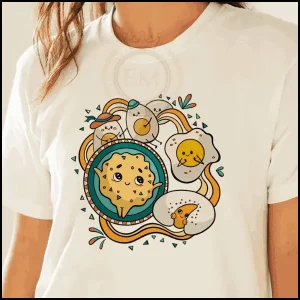
Preparando la pantalla y la tinta
La preparación de la pantalla y la tinta es un paso vital en el proceso de serigrafía., donde la precisión se encuentra con la creatividad.
Elegir la pantalla adecuada
Seleccionar la pantalla correcta es crucial para lograr impresiones exactas y precisas.. Considere el recuento de malla, tamaño de pantalla, y material del marco según su diseño y el resultado deseado.
Aplicar emulsión y crear plantillas
Recubrir la pantalla con emulsión y crear la plantilla es un paso vital en el proceso de serigrafía.. Follow the manufacturer’;Instrucciones para aplicar uniformemente la emulsión., asegurando una exposición adecuada y un enjuague minucioso para revelar la plantilla deseada.
Mezclar y preparar la tinta
Mezclar los colores de tinta con precisión es esencial para lograr los matices y tonos deseados.. Vasos para mezclar, balanza, y guías de colores pantone puede ayudarle a lograr una combinación de colores consistente y precisa.
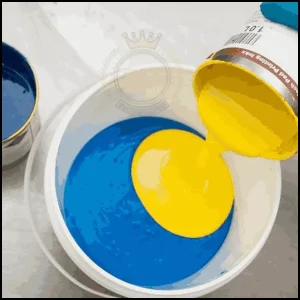
Proceso de impresión paso a paso
El proceso de impresión paso a paso es un enfoque metódico para transferir diseños a una variedad de materiales., Requiere atención al detalle y dominio de la técnica..
Configuración de la pantalla en la prensa
Antes de sumergirte en el apasionante mundo de la serigrafía, necesitas configurar tu pantalla en la prensa. It’;Es como preparar el lienzo antes de pintar tu obra maestra..
Asegúrese de que la pantalla esté bien asegurada en la prensa., so it doesn’;No te mueves como una medusa borracha.. Una pantalla estable le brindará impresiones nítidas y limpias.
Alineación del diseño y la platina
Ahora que tu pantalla está lista, it’;Es hora de alinear su diseño con la platina.. Piense en ello como un juego de alto riesgo de conectar los puntos pero con más tinta..
Tómese su tiempo para asegurarse de que el diseño esté centrado en la platina., o podrías terminar con una camiseta que parece impresa por un mono con los ojos vendados..
Técnicas adecuadas de aplicación de tinta
Ha llegado el momento de sacar el Picasso que llevas dentro y aplicar la tinta. Don’;no seas tacaño con eso, but don’;Tampoco te vuelvas loco.
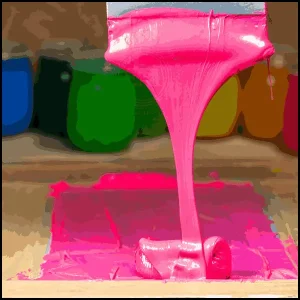
Use suficiente tinta para que su diseño destaque, como un pavo real haciendo alarde de sus plumas. It’;Se trata de encontrar ese punto óptimo entre muy poca y demasiada tinta..
Extiéndalo uniformemente por la pantalla., como un criminal suave.
Curar y secar las camisas estampadas
Felicidades, you’;Has impreso tus camisetas con éxito.! But don’;No lo celebro todavía, porque necesitan un cuidado tierno y amoroso para alcanzar su máximo potencial. Curar y secar las impresiones es como enviarlas a un lujoso spa..
Follow the instructions for the specific ink you’;Vuelva a usarlas y déles un buen tratamiento térmico para garantizar que las impresiones se mantengan vibrantes y duren más..
Solución de problemas comunes de impresión
ah, el placer de solucionar problemas. Justo cuando pensabas que todo iba bien, aparece un problema de impresión salvaje. Don’;no entre en pánico!
A continuación se detallan algunos problemas comunes que puede encontrar y cómo abordarlos.:
- Sangrado de tinta: Si tu tinta se extiende fuera de las líneas como un adolescente rebelde, Intente usar menos presión al aplicar la tinta o cambie a una consistencia de tinta más espesa.. También puedes intentar usar una pantalla de malla inferior para evitar que la tinta se filtre..
- Impresiones desiguales: Si tu diseño parece una obra maestra de Picasso (pero no en el buen sentido), Comprueba que tu pantalla esté correctamente alineada con la camiseta.. La presión desigual o una pantalla mal estirada también pueden causar este problema..
- Manchas de tinta: Si tu impresión parece haber sido atacada por un travieso monstruo de tinta, puede haber exceso de tinta en la pantalla, o tu escobilla de goma podría estar demasiado sucia. Limpia ambos a fondo y vuelve a intentarlo.. And don’;No olvides lavarte las manos después., a menos que quieras terminar con huellas dactilares manchadas de tinta como un aspirante a detective.
EMdigitalización: Experto en digitalización de bordados a su servicio
Si estás interesado en algún tipo de proyecto de bordado., entonces EMdigitizing es la mejor opción para ti. Ofrecemos digitalización de bordados y servicios de arte vectorial con un tiempo de respuesta rápido. También puedes visitar y consultar nuestra web así como nuestros mejores servicios..
También ofrecemos una gran 50% Descuento en todos nuestros servicios para nuestros respetados clientes primerizos.. Nosotros también ofrecer cotizaciones gratis generado en tan solo 5 minutos.
Deberías aprovechar esta oferta por tiempo limitado y llevar tu proyecto de bordado al siguiente nivel con EMdigitizing.
Si tienes alguna consulta sobre este tema, puedes preguntarles. Gracias por tomarse el tiempo de leer este artículo..
Preguntas frecuentes:
Necesitas una pantalla, enjugador de goma, tinta, emulsión, un cuarto oscuro, y una fuente de luz para la exposición. Además, un espacio de trabajo limpio y un área de secado para las camisas terminadas son esenciales.
Pre-wash the shirt to remove impurities and ensure it’;Está completamente seco antes de imprimir.. también, Planche la camiseta para eliminar las arrugas que puedan afectar la calidad de impresión..
Crea tu diseño, preparar y exponer la pantalla, Aplicar tinta a través de la pantalla sobre la camiseta., y luego curar la tinta. Limpiar la pantalla después de su uso es crucial para futuras impresiones.
Sí, con equipo y suministros básicos, Puedes empezar a serigrafiar en casa.. La paciencia y la práctica son claves para conseguir resultados profesionales..
